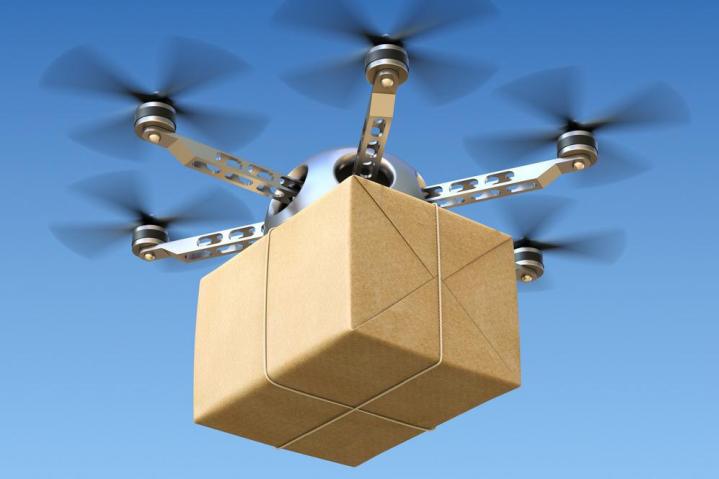With drone technology advancing significantly in recent years, the day when the flying machines are used to move goods from A to B on a large scale feels like it’s coming closer.
Truth is, some organizations are already using the technology to carry items such as medical supplies between facilities, but for an air-based delivery service as complex as the one Amazon proposes, a myriad of safety issues first need to be addressed.
A big part of the solution requires the creation of a reliable air traffic control system so that autonomous drones can fly without incident over long distances.
In the U.K., National Air Traffic Services (NATS), the country’s leading air traffic services provider, announced this week that it has partnered with drone traffic management solutions company Altitude Angel to build a system that it claims will safely integrate drones in the skies over the U.K.
The partners believe a viable system could be in place as early as 2019, opening up the skies to a range of businesses looking to build out their delivery platforms or use the technology for other purposes.
The planned system claims to offer full integration with the existing air traffic control operation involving manned aircraft, but would keep commercial drones flying in low-level airspace. It would also ensure that the airspace given over to commercial drones is properly monitored and organized to prevent near misses and collisions among the unmanned aerial vehicles and also with manned aircraft, and to provide a communication channel to enable air traffic controllers to quickly contact drone operators if an issue arises.
“Drones offer huge potential benefits to public services and the economy, with a growing number of organizations looking to increase their use of drones in their everyday operations, from online retailers through to emergency services,” NATS said in a post outlining its plan. “However, reports of incidents involving drones flying dangerously close to manned aircraft are on the rise, with drone incidents now accounting for more than half of all airprox reports received by NATS.”
Commenting on the initiative, David Harrison, NATS Director of Safety, said the increasing popularity of commercial drone operations and the growing number of drone-related incidents “make it essential that we take steps now to help make this happen, and this new partnership will get the U.K.’s unmanned traffic industry off to a safe, flying start.”
Similar systems
The U.K.’s effort to develop an effective system mirrors similar moves in the U.S. by companies such as Google parent Alphabet, which has been investing in not only its Project Wing drone platform, but also in an air traffic control system for drones that it hopes, when it’s fully ready, will persuade the Federal Aviation Administration to permit drone delivery on a wide scale. NASA is also developing the Unmanned Aircraft System Traffic Management enterprise, to make the skies safe for autonomous flying machines.
At the same time, a collaboration between Swiss air navigation service provider Skyguide and California-based drone airspace management platform AirMap is working to create a similar system for use in Switzerland that could eventually be rolled out to the rest of the European continent. Like the U.K. effort, it’s also looking to launch the system in 2019.



